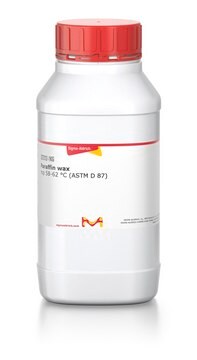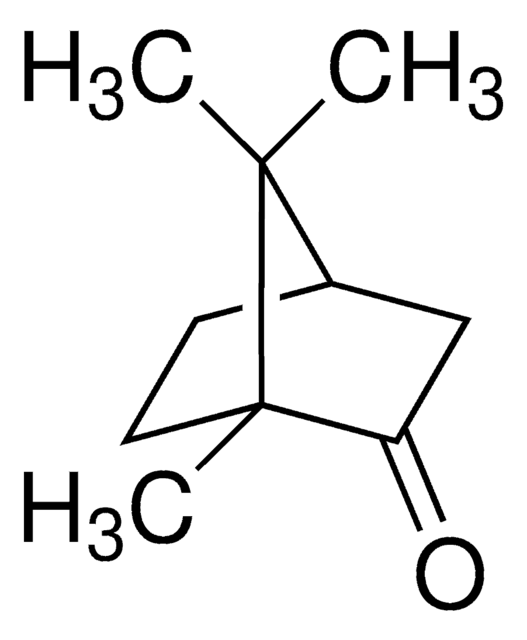Recommended Products
form
solid
color
yellow
mp
61-65 °C (lit.)
Looking for similar products? Visit Product Comparison Guide
General description
Beeswax is a natural wax that is formed from honeybee Apis mellifera. It is a lipid that contains hydrocarbons, esters and free acids, which can be used to lower the transference of water on films.
Application
Beeswax is used to produce edible films (sodium caseinate, soy protein isolate, etc.). It can form a mixture with a variety of fatty acids and polyols to provide flexibile, elastic and stretchable films. It also decreases the water vapor permeability and enhances the mechanical properties of the film.
Storage Class Code
11 - Combustible Solids
WGK
WGK 3
Flash Point(F)
Not applicable
Flash Point(C)
Not applicable
Personal Protective Equipment
dust mask type N95 (US), Eyeshields, Gloves
Choose from one of the most recent versions:
Already Own This Product?
Find documentation for the products that you have recently purchased in the Document Library.
Z Zhang et al.
Endocrinology, 157(12), 4930-4942 (2016-12-03)
Estrogen deficiency after ovariectomy (OVX) results in increased adiposity and bone loss, which can be prevented by systemic 17-β estradiol (E2) replacement. Studies in transgenic mice suggested that in addition to direct actions of estrogen in peripheral tissues, also estrogen
Tensile properties and water vapor permeability of sodium caseinate films containing oleic acid-beeswax mixtures
Fabra MJ, et al.
Journal of Food Engineering, 85(3), 393-400 (2008)
Effect of beeswax modification on the lipid matrix and solid lipid nanoparticle crystallinity
Attama AA and Muller-Goym CC
Colloids and Surfaces. A, Physicochemical and Engineering Aspects, 315(1-3), 189-195 (2008)
Chao Zhang et al.
Journal of agricultural and food chemistry, 60(9), 2219-2223 (2012-02-14)
Soybean-protein isolate (SPI) has excellent film-forming capacity. However, the water vapor permeability of SPI film is high, which will cause the moisture lose of packaged products. The effect of high-pressure homogenization (HPH) on the water vapor permeability of SPI-beeswax films
R J Stacey
Analytical and bioanalytical chemistry, 401(6), 1749-1759 (2011-06-18)
Residues from medicine containers in the collections of the British Museum have been investigated as part of a wider programme of scientific work on Roman surgical instruments. The cylindrical bronze containers are often described as instrument cases, but some contain
Our team of scientists has experience in all areas of research including Life Science, Material Science, Chemical Synthesis, Chromatography, Analytical and many others.
Contact Technical Service







